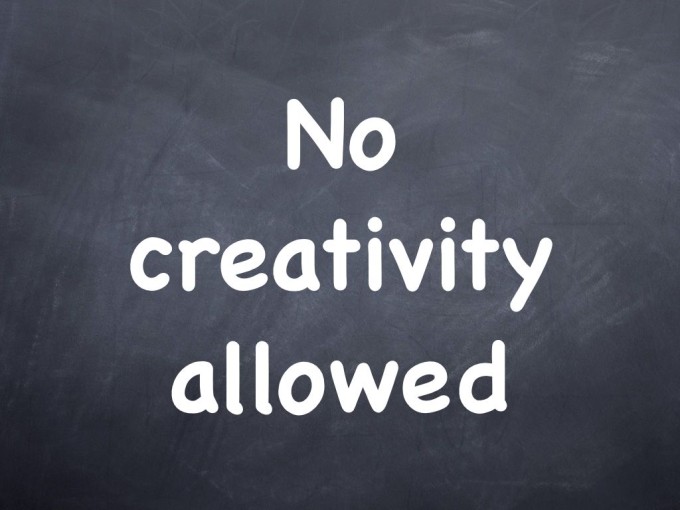
In fact, I’m going to outline some of the worst stock art habits which are becoming increasingly common amongst not only weekend website warriors and Wix users, but even endemic among professional creative designers and marketers.
Can you relate to any of them?
Women Laughing Alone with Salad (a.k.a. Generic People)
A personal favourite. It’s unoriginal. It’s cringe worthy. It’s downright misleading. Salad is not that funny.

The problem at hand here isn’t people and salad, but about the lack of creativity when it comes to marketing a product. Another guilty party? Pizzas.

I enjoy pizza as much as the next person but apparently not as much as these Shutter-stockers. If you’re designing a website for a pizza company, you should be showing off your own kitchen, dining environment and overall brand, rather than some heavily made-up people with pearly white teeth eating a suspiciously-photoshopped looking pizza (ever seen how McDonald’s make their food in adverts?).
Inane Icons
I’ve got nothing against using these in principle, but it’s so obvious when a website is using stock icons with no bastardization – that is, changing the colour scheme to match the brand or personalising them. Unique icons add so much extra value to a site – take a look at Müller’s, one of the top dairy distributors in the UK:

The dairy theme is prevalent and is in-keeping with Müller’s brand – far more appealing for a prospective candidate than if they used a stock image of a van or a set of cogs with no individualisation.
Conceptless Concepts
My colleague recently wrote a great piece on the concept of gamification in recruitment and was curious about what would show up when he typed ‘gamification’ into Shutterstock. Some pretty rubbish results to be honest – take a look!

Seriously, what have street signs got to do with gamification?
It’s good to know that I’m going the right way towards gamification on an imaginary road. This sort of stock imagery really harms the creative process – I’d much rather design my own image than use one of these monstrosities. Needless to say, my colleague shunned these too!
Is it killing our creative spirits?
Without a doubt, stock imagery has been a great time-saver when designing websites. They work perfectly as placeholder imagery when presenting websites to clients in alpha stage, but from then on, the right amount of work must be put in to conceive a bespoke design. And by the very definition of ‘stock imagery’, that can’t be achieved with, ahem, stock imagery in an unadulterated form. In the creative industry, there has been a dangerous lean towards laziness – something that is antonymous to the word ‘create’. If we’re not constantly pushing ourselves, we’d still be using websites like this:

Almost every web designer uses Shutterstock to some extent – but for me, the challenge is how to use Shutterstock to complement and benefit the website being designed. If I need to, I will spend an extra 30 minutes looking for that perfect icon – that I can then customise further, rather than just searching ‘people icon’ and choosing one of the first few results. It’s down to the designer to ensure laziness doesn’t creep in.
Next time you use a stock art database or image agency, ask yourself this – does this photo really sum up what I’m trying to achieve?
Read more at the 4Mat Blog.
 About the Author: Neil Calcutt is a Senior Designer at 4Mat, a leading recruitment marketing and online recruiting firm based in the UK.
About the Author: Neil Calcutt is a Senior Designer at 4Mat, a leading recruitment marketing and online recruiting firm based in the UK.
A graduate in Visual Communication – Graphic Design at KIAD (Maidstone) in 2000, Neil has amassed over 14 years experience in advertising, branding, corporate identity, digital, marketing, packaging, retail POS and websites. Neil has worked for some of the best design agencies throughout his career. He has a passion for design in the field of branding and typograhpy.
Before 4MAT, Neil worked for agencies such as Ogilvy One, Fruition London, Dr Martens, FKC (Fox Kalomaski Crossing), Porter Novelli and The Football League. He is responsibility for hitting a client brief and the exposure the brief to a diverse client and project base.
Follow Neil on Twitter @calcky9 or connect with him on LinkedIn.
By Neil Calcutt
Recruit Smarter
Weekly news and industry insights delivered straight to your inbox.





